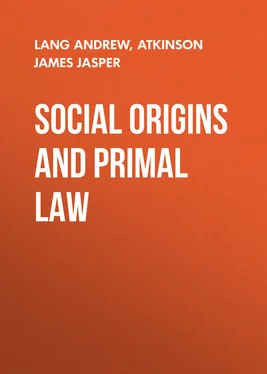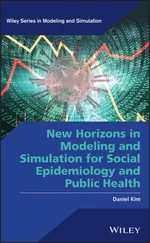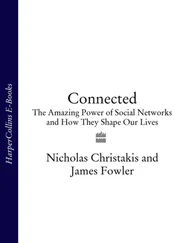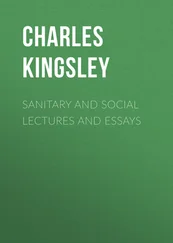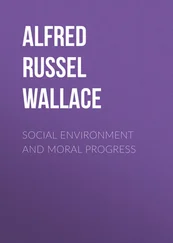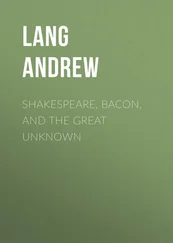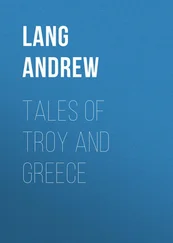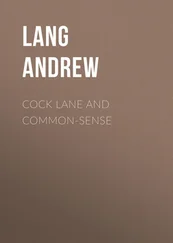Andrew Lang - Social Origins and Primal Law
Здесь есть возможность читать онлайн «Andrew Lang - Social Origins and Primal Law» — ознакомительный отрывок электронной книги совершенно бесплатно, а после прочтения отрывка купить полную версию. В некоторых случаях можно слушать аудио, скачать через торрент в формате fb2 и присутствует краткое содержание. Жанр: foreign_antique, foreign_prose, на английском языке. Описание произведения, (предисловие) а так же отзывы посетителей доступны на портале библиотеки ЛибКат.
- Название:Social Origins and Primal Law
- Автор:
- Жанр:
- Год:неизвестен
- ISBN:нет данных
- Рейтинг книги:3 / 5. Голосов: 1
-
Избранное:Добавить в избранное
- Отзывы:
-
Ваша оценка:
- 60
- 1
- 2
- 3
- 4
- 5
Social Origins and Primal Law: краткое содержание, описание и аннотация
Предлагаем к чтению аннотацию, описание, краткое содержание или предисловие (зависит от того, что написал сам автор книги «Social Origins and Primal Law»). Если вы не нашли необходимую информацию о книге — напишите в комментариях, мы постараемся отыскать её.
Social Origins and Primal Law — читать онлайн ознакомительный отрывок
Ниже представлен текст книги, разбитый по страницам. Система сохранения места последней прочитанной страницы, позволяет с удобством читать онлайн бесплатно книгу «Social Origins and Primal Law», без необходимости каждый раз заново искать на чём Вы остановились. Поставьте закладку, и сможете в любой момент перейти на страницу, на которой закончили чтение.
Интервал:
Закладка:
I took the liberty of laying a brief sketch of my own theory before Mr. Howitt, who, after considering it, was unable to accept it. He was kind enough to send me a summary account of many varieties of institutions, which, as we have seen, prevail – from tribes with totems and the simple phratry and female descent, up to tribes which have lost their classes and totems, count descent in the male line, and permit marriage only between persons dwelling in certain localities, or not of 'too near flesh.' All sorts of varieties of custom, in fact, prevail. Again, the most backward tribes, in Mr. Howitt's opinion, have group-marriage; 67 67 This view is discussed later.
the more advanced have individual marriage, with rare reversions on special occasions. Each advance, from mere phratry to phratry plus eight 'classes,' reduced the number of persons who might intermarry, and extended the range of exogamy (except where, as among the Arunta, the totem prohibition has ceased to exist). The marked tendency of the developing rules is to prevent marriage between persons 'too near in flesh,' or 'of the same flesh.' Mr. Howitt argues that, if the later stages of prohibition are the result of deliberate intention to prevent too near marriage, we may infer that the original 'bisection' of the 'undivided commune' was also consciously designed to prevent unions of persons of too near flesh.
To this I would reply, that the circumstances were different. The savages of recent centuries have been trained in the totem and phratry systems, and have now, like Mr. Howitt, excogitated the theory that these were originally designed for the purpose of preventing marriages of 'too near flesh,' wherefore all such marriages (even if permitted by the totem law) must be morally or materially evil. This is the theory expressed in the myths of the Dieri, Woeworung, and others; and it is the theory of many scientific writers. In brief, it is the hypothesis of men already trained to think near marriages morally wrong, or physically injurious. But how could this idea occur to members of 'an undivided commune,' who had never known anything better?
That is the difficulty; and we get rid of it by disbelieving in a primeval undivided commune; and by supposing a long past of forbidden unions, the prohibition then resting on no moral ideas, but on the interest of the strongest, the jealousy of the adult sire. These prohibitions later evolved into conscious morality; and were at last susceptible of improvement by deliberate design. I shall now examine more in detail the ideas which do not win my assent.
MR. FISON ON THE GREAT BISECTION
In 1880, in Kamilaroi and Kurnai , 68 68 P. 27 et seq .
Mr. Fison, a learned missionary and anthropologist, gave his account of the organisation of certain Australian tribes. He speaks of (1) The division of a tribe, or community, into two exogamous intermarrying classes. 69 69 There is a tradition of an aboriginal Adam, who had two wives, Kilpara and Mukwara, these being the names of two phratries. On this showing brothers married paternal half-sisters ( Kamilaroi and Kurnai , p. 33).
(2) 'The subdivision' (mark the phrase) 'of these classes into four.' (3) 'Their subdivision into gentes , distinguished by totems, which are generally, though not invariably, the names of animals.'
Now totems we know, and we have cited Mr. Mathews for the other divisions. Take (1) 'the two exogamous intermarrying classes.' Examples are
Male, Kumite; female, Kumitegor (one 'class,' which I call 'phratry').
Male, Kroki; female, Krokigor (the other 'class,' 'phratry').
Again.
Male, Yungaru ( opossum ); female, Yungaruan .
Male, Wutaru ( kangaroo ); female, Wutaruan .
What are these two ' primary ' exogamous divisions? And why call them 'primary'?
' PRIMARY CLASSES?'
My object, as has been said, is now, contrary to general opinion, to repeat that the great dichotomous 'division' of a tribe into two exogamous, intermarrying, 'classes' or 'phratries,' is not 'primary' at all, but is secondary to groups at once totemic and exogamous, and is not, in origin, a bisection, but a combination. If I am right, the consequences will be of some curiosity. First, it will appear that the 'primary divisions' are themselves totemic in origin, thus implying the pre-existence of Totemism. Next it will be made to appear probable that the pre-existing totems were already exogamous before the phratries arose, and that exogamy does not date, as the best authorities hold, from the making of the great dichotomous divisions or 'phratries.' For no such dichotomous division, I suggest, was ever made.
THE 'PRIMARY DIVISIONS' ARE THEMSELVES TOTEMIC AND EXOGAMOUS
We see that, of the two 'phratries' Yungaru and Wutaru, Yungaru is 'opossum' (according to Mr. Chatfield) or 'alligator' (according to Mr. Bridgman); while Wutaru is 'kangaroo.' These two primary 'phratries,' therefore, have totemic names, and (in my opinion) were originally two local totem groups, each containing members of various totems derived from alien mothers. The same thing may be true when the meanings of the 'primary class names' ('phratries') can no longer be discovered. If so, the 'primary divisions' are, in origin, mere totem distinctions, involving, I think, the pre-existence of the rule of exogamy, which is also involved in the rules of the 'primary divisions.' Mr. Fison writes (what is obvious) 'in some places the primary divisions are distinguished by totem names at the present day.' 70 70 Kamilaroi and Kurnai , p. 40.
'Probably they were so distinguished everywhere, in ancient times,' he adds, and this is certainly the case in North America, as we shall see later. Mr. Fison's opinion is my own so far, and, if it is right, if the 'primary class divisions' ('phratries'), within which marriage is now forbidden, were originally two totem divisions, then Totemism is earlier than the 'primary divisions.' On this point Messrs. Fison and Howitt say that the divisions on which marriage regulations are based 'are denoted by class names or by totems – frequently by both class names and totems.' In a note they add, 'Class names, so called by us solely for the sake of convenience, and because they cannot always be positively asserted to be totems, though the strong probability is that they are always totems.' 71 71 J. A. I. xiv. 142.
By 'class names' the authors, I think, here mean the names of the 'primary exogamous divisions' or 'phratries.' These are often, if not always, known by totem names. But the 'classes,' as distinguished from the 'phratries,' are not known by totemic names, as far as I am aware. Herr Cunow, we shall see, asserts that in some cases they denote mere seniority, 'big' and 'little,' 'young' and 'old.' Unless they can be proved to be totemic, we must, I repeat, carefully avoid confusing the 'classes,' four or eight, with the 'phratries,' in which they are included. The confusion is general and very misleading.
Totemism, according to Mr. McLennan, preceded exogamy, and made exogamy possible. Thus totem distinctions, with exogamy, may be older than the 'two primary class exogamous divisions,' in which, according to most authorities, exogamy began. Mr. Tylor is cautious: 'the dual form of exogamy' (the 'phratries,' or 'two primary divisions') 'may be the original form,' or at least that view is tenable. 72 72 Journal of the Anthropological Institute , xviii. 264.
The origin of exogamy is, however, unknown, in Mr. Tylor's opinion, which commits him to nothing.
Mr. Howitt, if I do not misinterpret him, also regards the two divisions, 'phratries,' as primary, but at the same time agrees with me, and Mr. Fison, that the two 'phratry' divisions were themselves in origin totemic.
Читать дальшеИнтервал:
Закладка:
Похожие книги на «Social Origins and Primal Law»
Представляем Вашему вниманию похожие книги на «Social Origins and Primal Law» списком для выбора. Мы отобрали схожую по названию и смыслу литературу в надежде предоставить читателям больше вариантов отыскать новые, интересные, ещё непрочитанные произведения.
Обсуждение, отзывы о книге «Social Origins and Primal Law» и просто собственные мнения читателей. Оставьте ваши комментарии, напишите, что Вы думаете о произведении, его смысле или главных героях. Укажите что конкретно понравилось, а что нет, и почему Вы так считаете.
